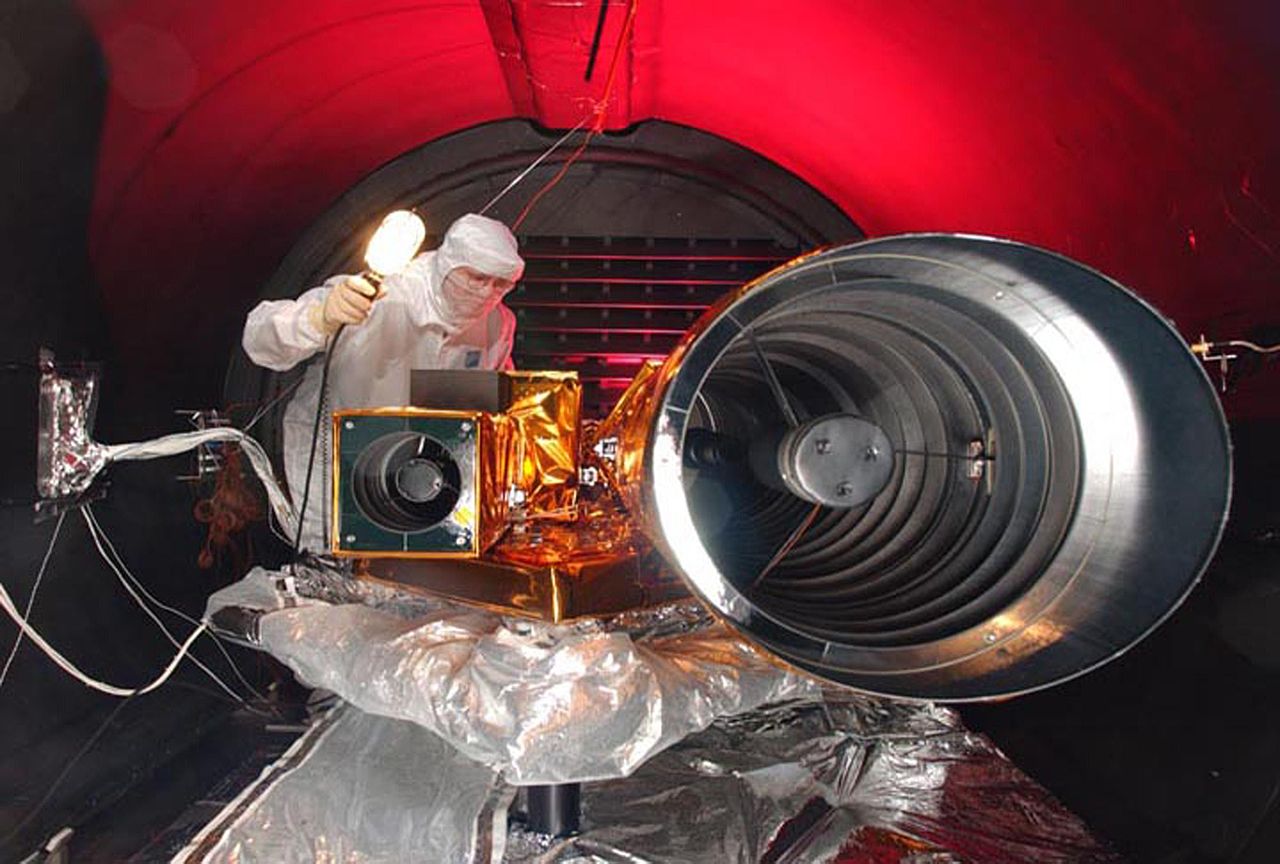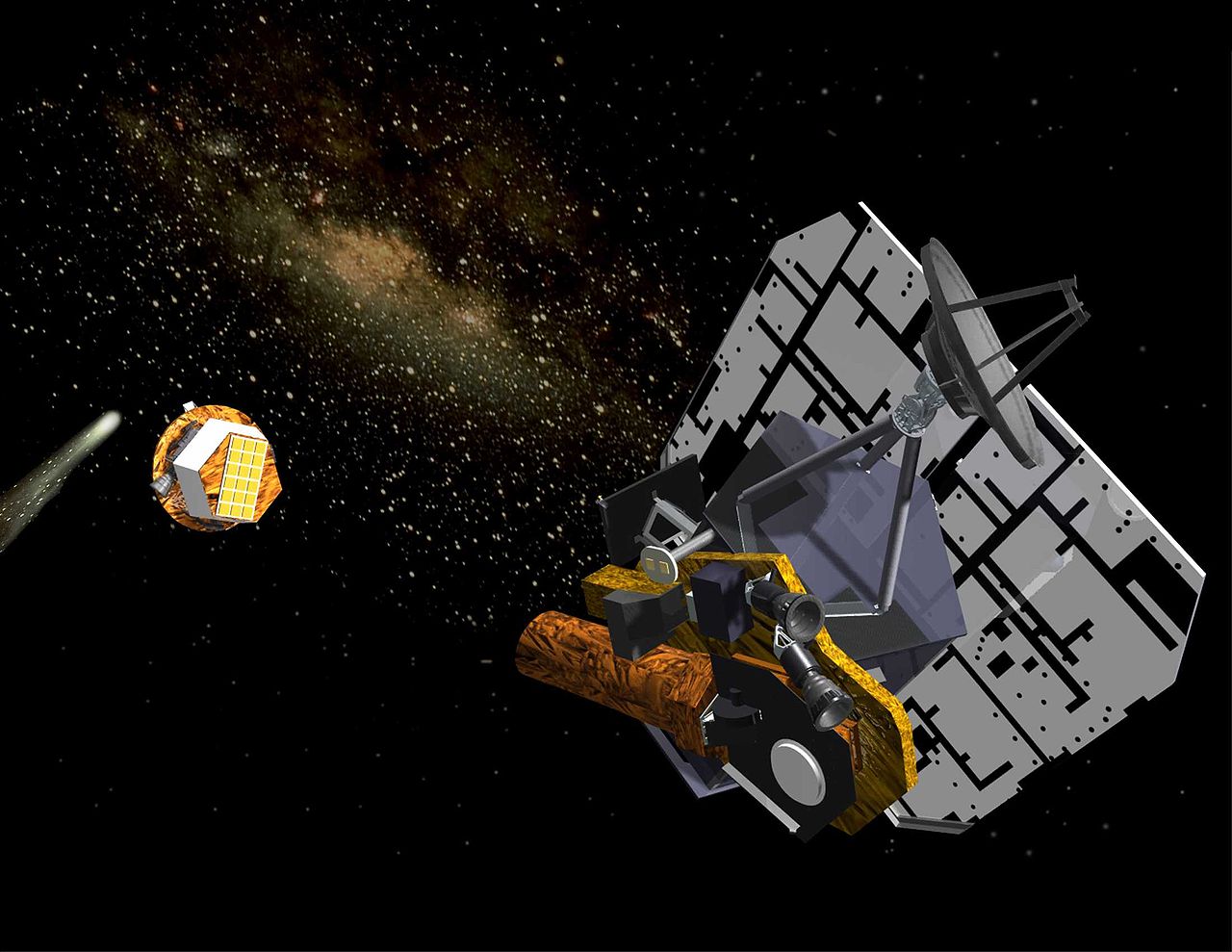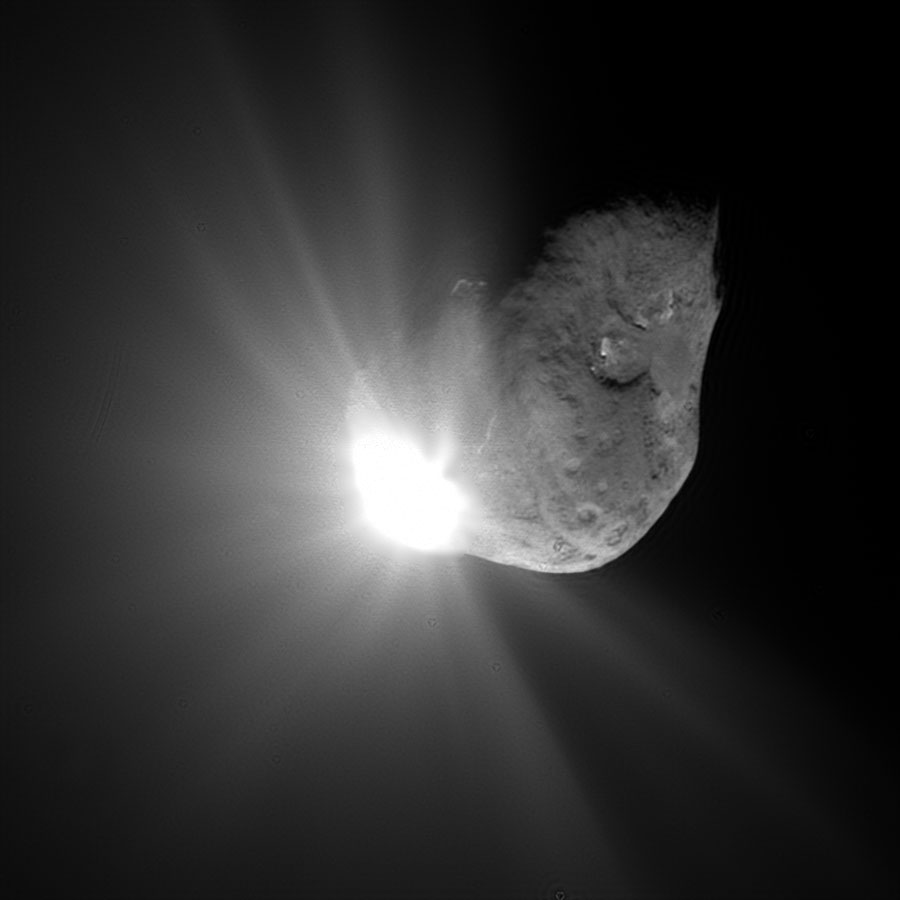Deep Impact – Colliding With A Comet!
Comets Interior
The Deep Impact mission, which deployed an impactor probe towards the comet Tempel 1 (and excavate material from its interior), was the first of its kind! The impact was equivalent to nearly 5 tonnes of TNT and sent a spectacularly bright cloud of debris upward and away from the comet. Following the successful mission, the Deep Impact spacecraft was repurposed to flyby and study comet Hartley 2 (103P/Hartley).
Fast Summary Facts About Deep Impact!
- Type: Flyby, Impactor
- Destination: Tempel 1 (9P/Tempel)
- Status: Contact Lost
- Launch Location: Cape Canaveral, Florida
- Launch Date: January 12th 2005
- Flyby Of Tempel 1: July 4th 2005
- Last Contact: August 8th 2013
- Mission Duration: 8 Years, 6 Months, 26 Days
Interesting Facts About The Deep Impact Mission
- The primary objectives of this NASA Discovery-class mission were to study the composition of the material excavated from the impact and image the impact crater itself to determine the comets mechanical properties!
- The spacecraft's impactor was 370 kgs (815-lb) in mass and could direct itself toward the comet once deployed. It was comprised of mainly copper and aluminium.
- Following a 431 million kilometre journey from Earth, the Deep Impact spacecraft deployed its impactor on a collision course.
- The Deep Impact impactor collided with the comet’s nucleus at 10.3 km/s (23,000 mph) releasing energy equivalent to 4,800 kilograms of TNT high explosive!
- The main Deep Impact spacecraft observed, and recorded the impact and studied the ejected material blasted from the crater as it flew by at a distance of 500 km.
- NASA scientists were surprised at the size and brightness of the debris cloud; which made for dramatic images.
- There was genuine public interest in the collision event, with it even being broadcast on outdoor screens in Hawaii!
- After Deep Impact's flyby and impact of comet Tempel 1, the spacecraft received a new mission and was sent to fly by a second comet – Hartley 2 (103P/Hartley 2).
- In 2009, following the successful completion of the Stardust mission, the main spacecraft was commanded by NASA to follow up from the Deep Impact mission by performing a flyby of comet Tempel 1 to image and collect data of the crater created from its impactor!
- Images sent back from the Stardust spacecraft shows that the crater is estimated to be 150 meters (500 ft) in diameter.
- In August 2013 while on its extended mission to observe other comets, communication with the spacecraft was lost and by the end of September NASA and JPL abandoned further efforts to revive the spacecraft.
- The cost of the mission was approximately $330 million USD, including the Delta II rocket launch. Amazingly, this is considered a relatively ‘low cost’ exploration mission!




Deep Impact Tests
Deep Impact
Kinetic Energy
Deep Impact Impact



